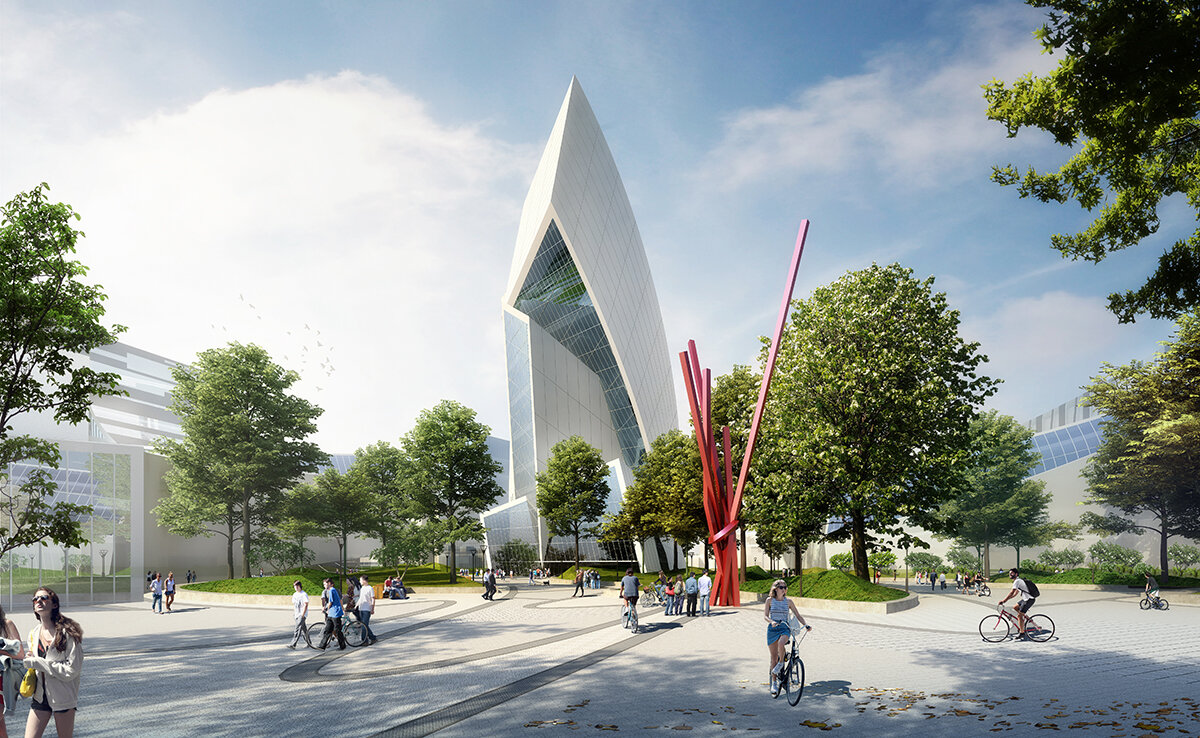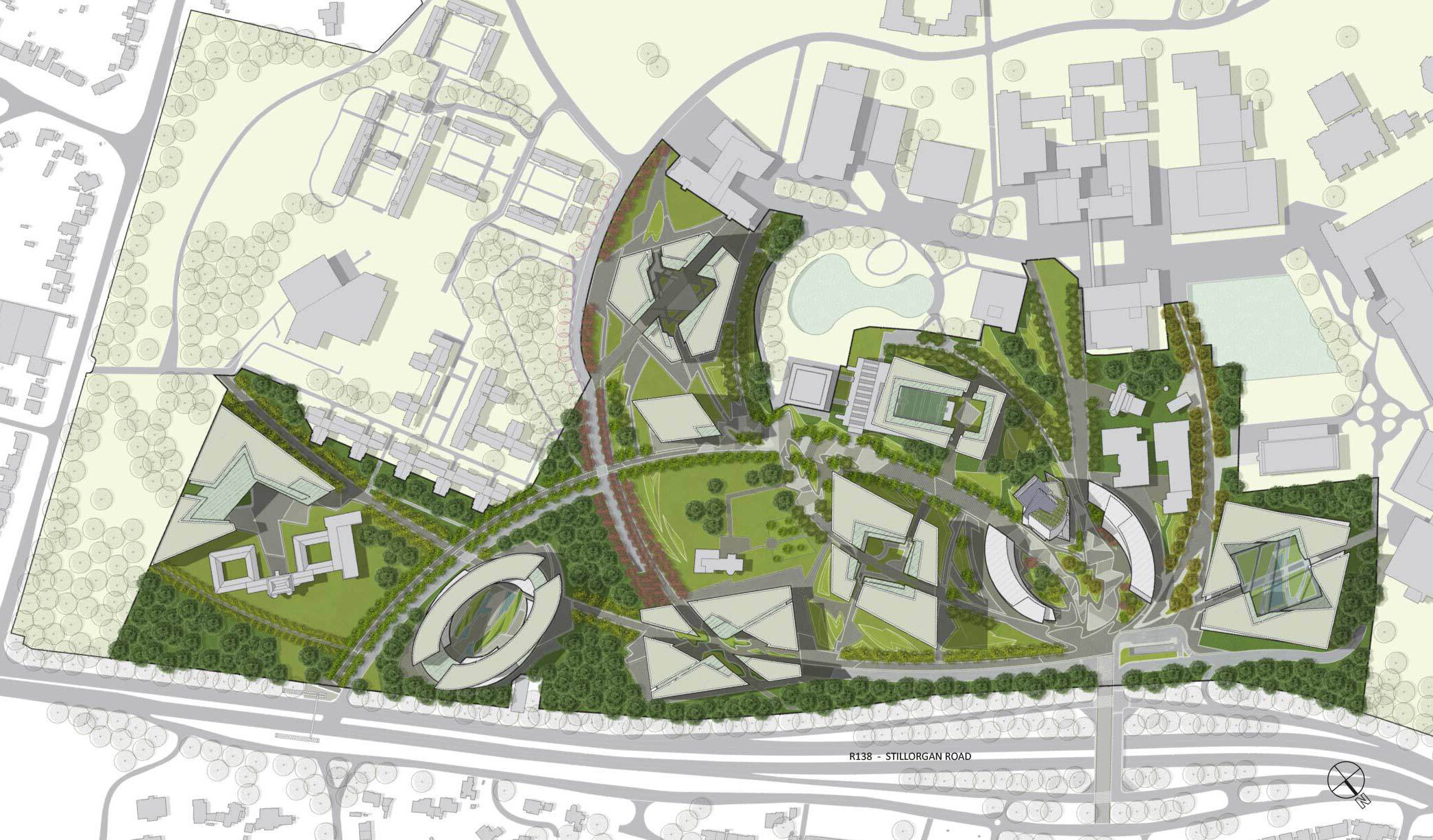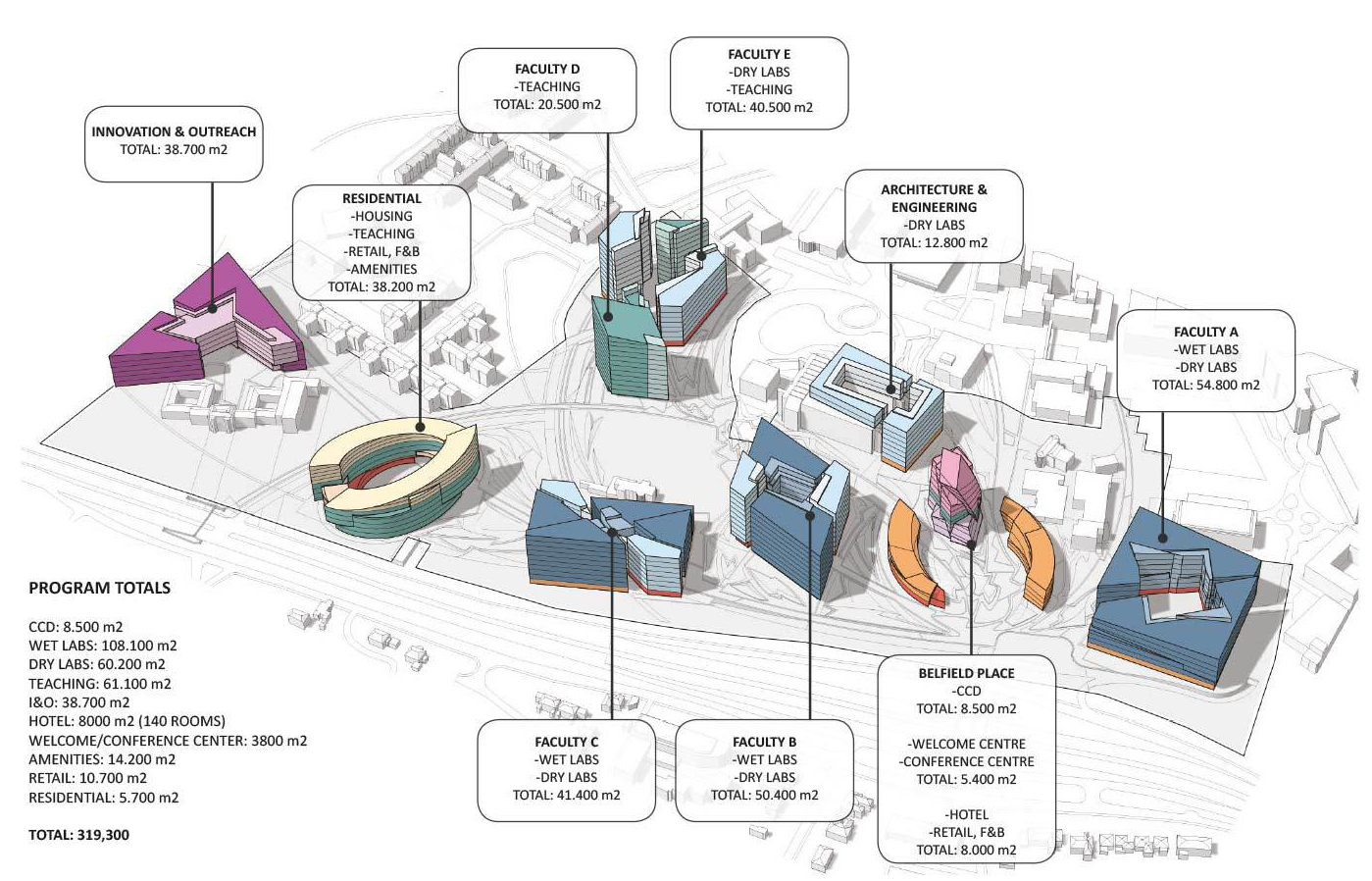UCD Future Campus
Studio Libeskind’s entry of the UCD Entrance Precinct Masterplan is inspired by the interlacing patterns of the initials in the Book of Kells, which have been described as “elastic forms expanding and contracting with a pulsating rhythm. The kinetic energy of their contours escapes into freely drawn appendices, a spiral line which in turn generates new curvilinear motifs...” (Carl Nordenfalk).
The original campus was built on farmland around the historical Ardmore, Belfield and Merville estates. It is rich in landscape and woodlands. The sylvan setting of the campus contributes both to the strong sense of place and identity, and the creation of a favourable image of the UCD .
The masterplan builds on this essential quality by putting landscape at its center. Landscape – ornamental and ‘wild’, with a network of interlacing paths – forms the basis on which the buildings ensembles are set.
The architectural program is structured into nine distinct buildings and compounds, representing the nine muses of Greek mythology as featured in James Joyce’s Ulysses. Because their footprint is similar to those of existing buildings such as the O’Brien Centre and the Newman Building, they appear as a natural addition to the campus. Seven of them, however, consist of multiple buildings arranged around a central space, variation on the traditional university quadrangle typology. Two buildings are 10-storey towers with an atrium such as the CCD.
The nine buildings and compounds are themed, inspired by the muses and the attributes assigned them in Ulysses. The architecture and landscape of the central public spaces, which may be open, covered or fully enclosed, are individually designed, giving each compound its distinct identity.
Bouwery’s Johan van Lierop was a key member of Studio Libeskind’s competition team.
Location: Dublin, Ireland
Status: competition, 2019
Client: University College Dublin
Design Principal: Studio Libeskind
Design Team:
Daniel Libeskind, Stefan Blach,
Johan van Lierop, Michael Ashley,
Alex Tahinos, Anthony Mull
Landscape architect: !Melk






